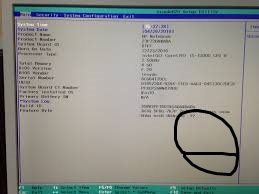
By disabling the protections provided by BIOS, such as Secure Boot or TPM (Trusted Platform Module),
users can unwillingly fail to comply with enterprise security policies or make systems vulnerable. An example is Secure Boot,
which allows only signed, trusted operating system bootloaders to be run-time-protected against rootkits and boot-level malware.
There may be a need to disable it in case of dual-boot configurations or when experimenting with OS, but in no case it should be done lightly.
Similarly, disabling TPM, which encrypts BitLocker drives, stores credentials, and performs remote attestation,
may make sensitive information vulnerable and decrease the reliability in enterprise systems. In high regulation industries
(e.g. finance, healthcare, defense), this may induce compliance failures or may result in device certification disqualification.
The practitioners in the field of BIOS unlocking have to balance the advantage of tailoring systems to the demands of their
users and the need to ensure that the system remains secure, particularly in managed IT systems. The most secure method is to lock divorced unlocked devices off of critical networks or restrict unlocking to non-production test systems.
Warranty Manufacturer Support
The other significant factor is the warranty and support status of your system. Most OEMs (including Dell, HP, Acer and Lenovo)
specifically indicate that altering BIOS firmware or circumventing BIOS-level passwords can void warranties. Even when
OEM documentation does not specifically refer to BIOS unlocking, the inferences are usually obvious: any modification of the
protected firmware settings, any flashing of unapproved firmware, or any administrative password removal without OEM permission will frequently result in rejected service claims.
Policies
Support policies of Dell particularly are quite strict when it comes to password resets. Their authoritative instructions
(see Dell.com) demand that ownership check must be made prior to any BIOS reset being accepted.
This implies that even when you buy the system used, you might not get the official support unless the device is officially transferred or cleared through the official channels.
The very reason why users resort to services such as SpUnlock.com is that OEMs tend toclose the
options in a rigid manner, and provide very little scope of negotiations. This path however leaves the entire obligation on the user to circumvent any warranty issues and stay within the minimal legal and ethical jurisdiction.
In conclusion: Although BIOS unlocking can open up great possibilities, this must by no means be taken lightly. The steps that have to be taken in advance, the development of recovery plans, the familiarization with the consequences of compliance, and the recognition of OEM policies are not subjects of negotiation. Unlocking can be a responsible process that increases control over the system, but it should never be performed without responsibility, documentation and technical preparedness.
